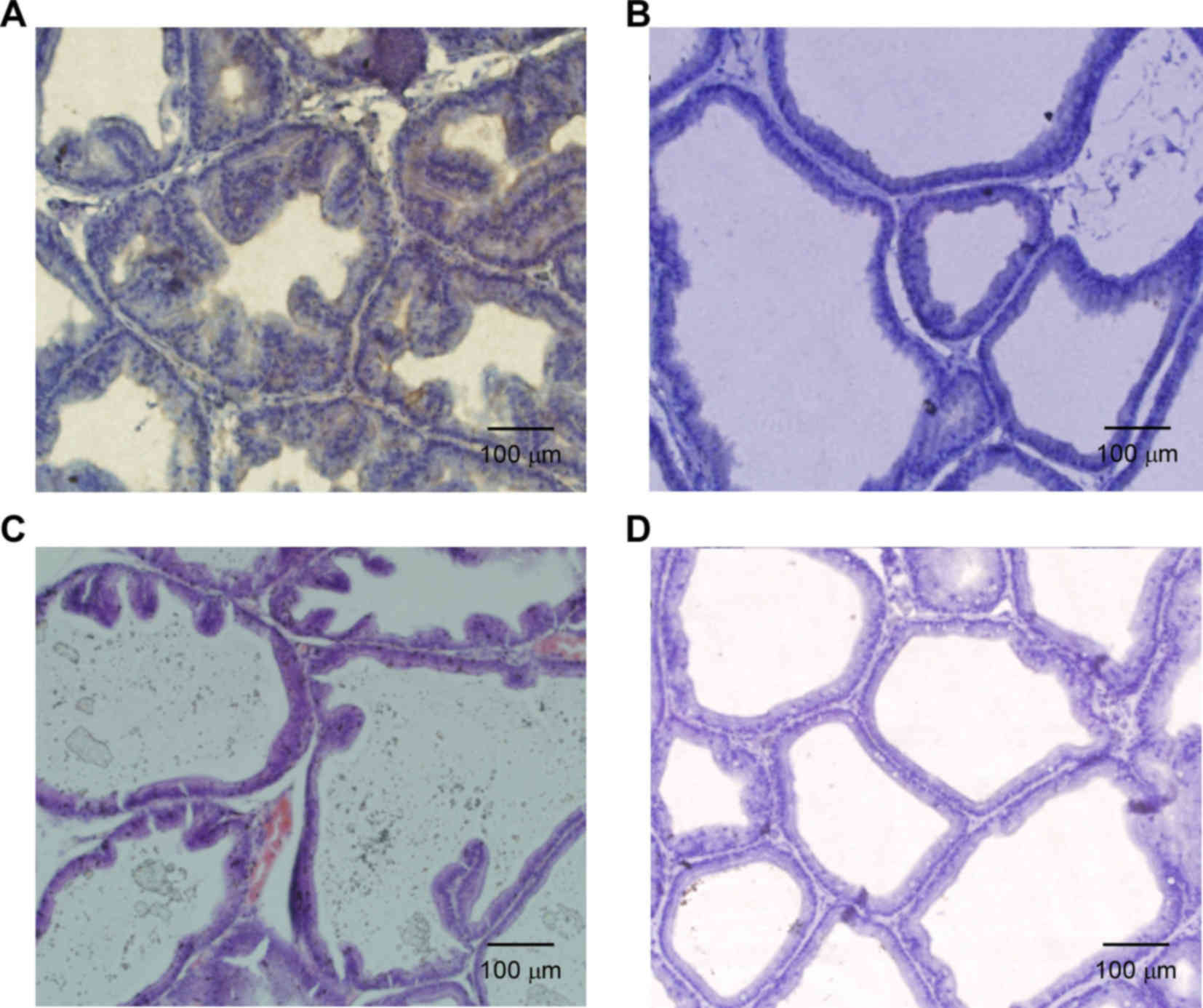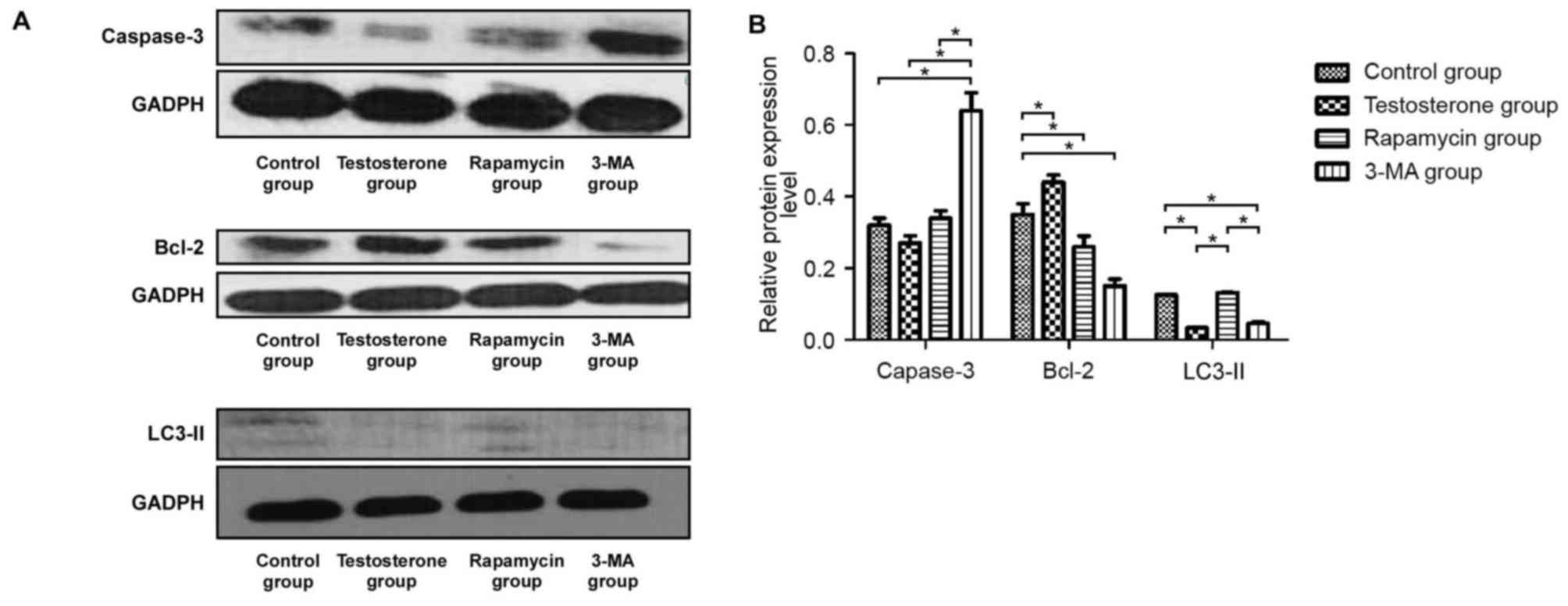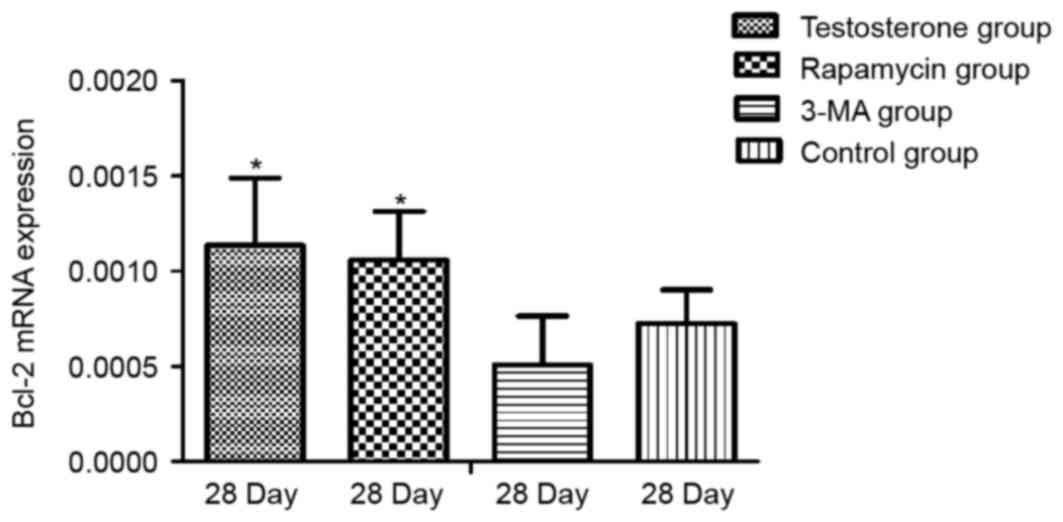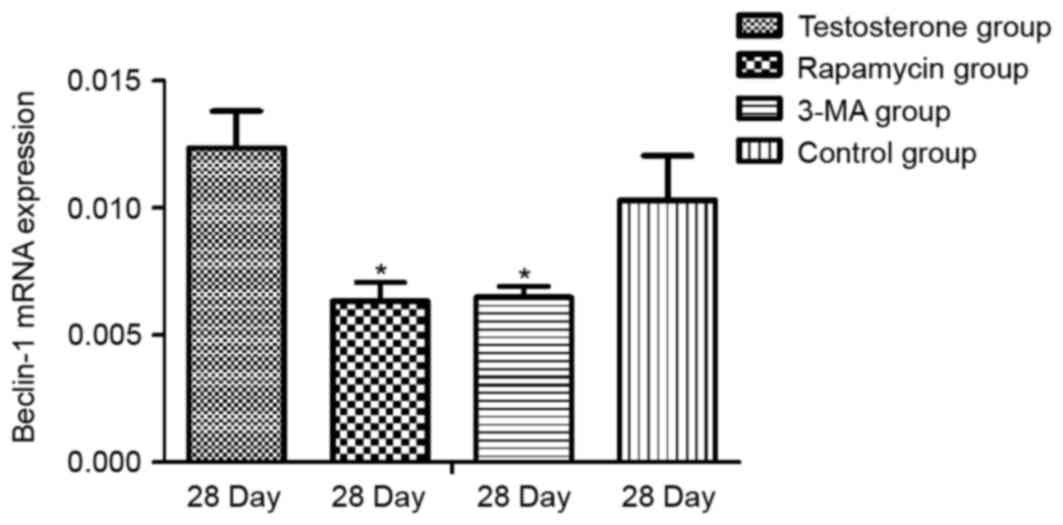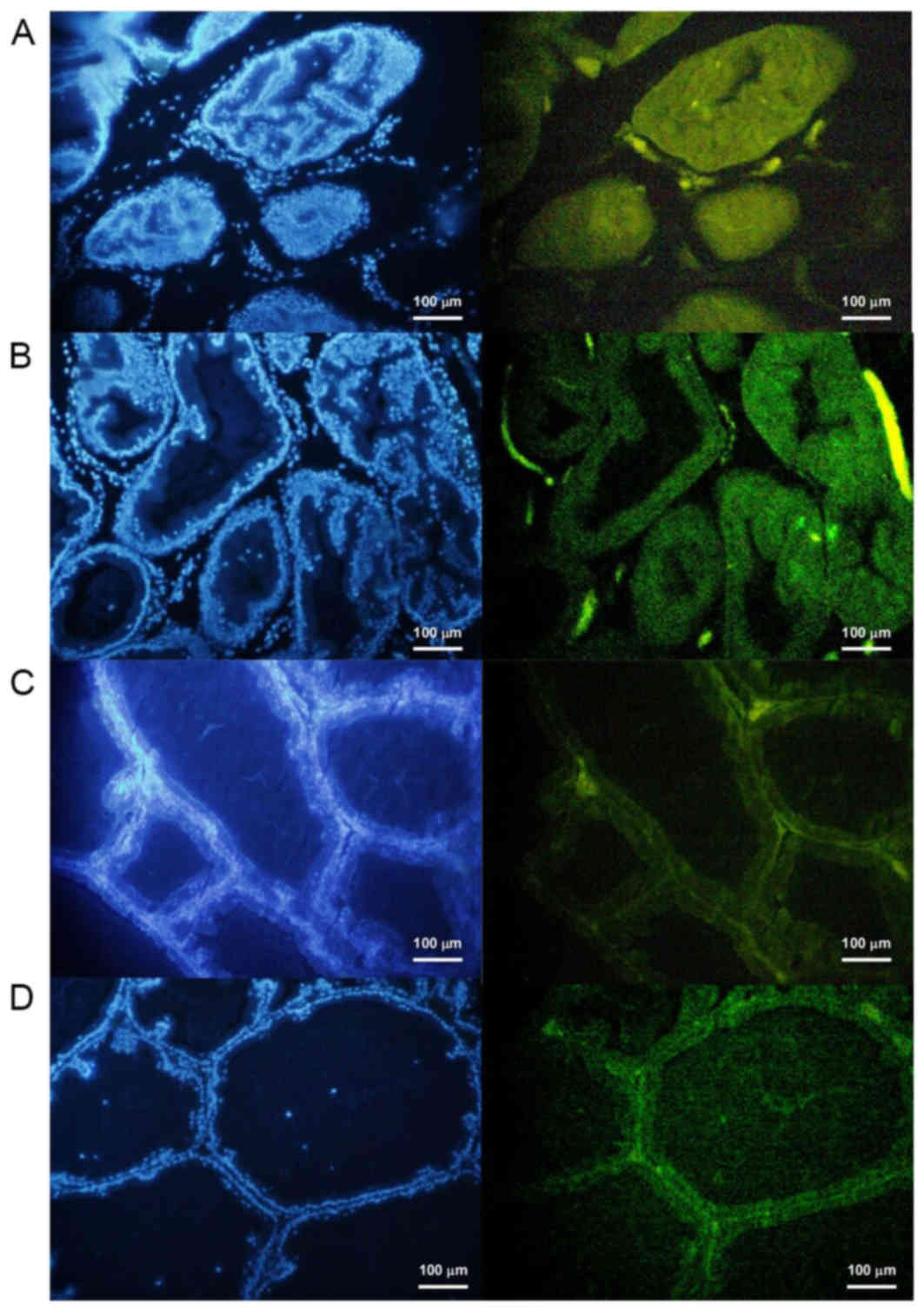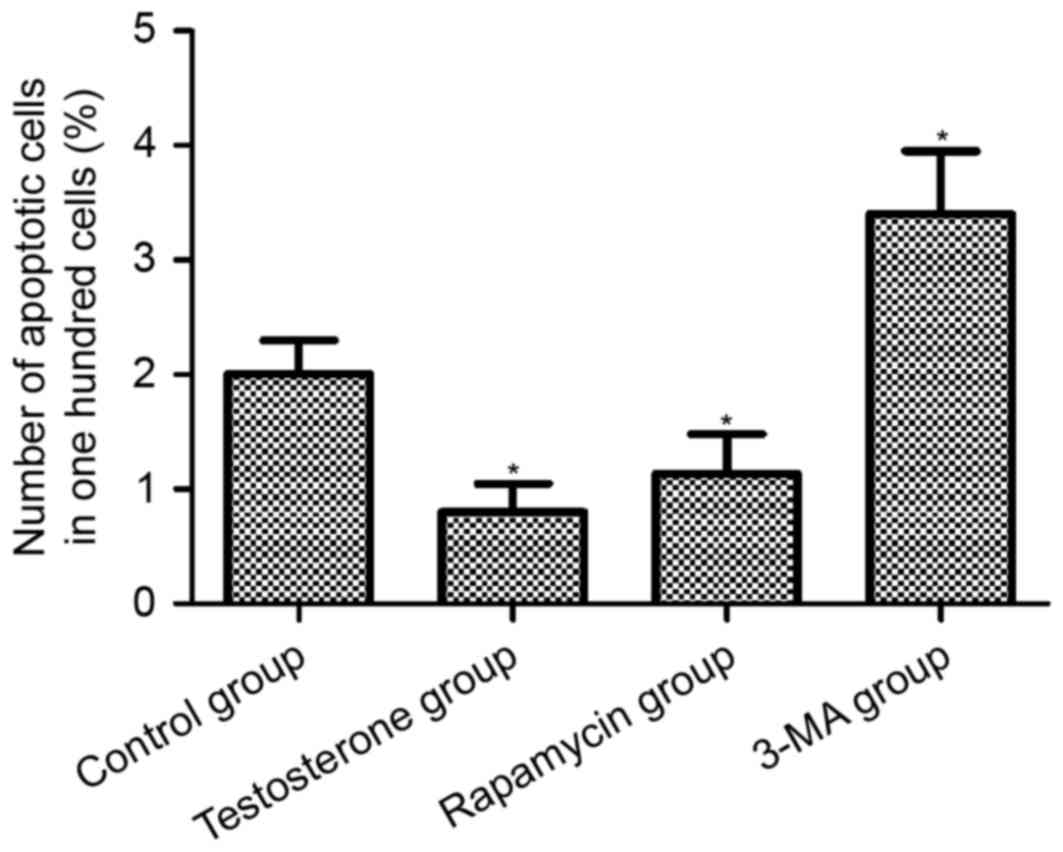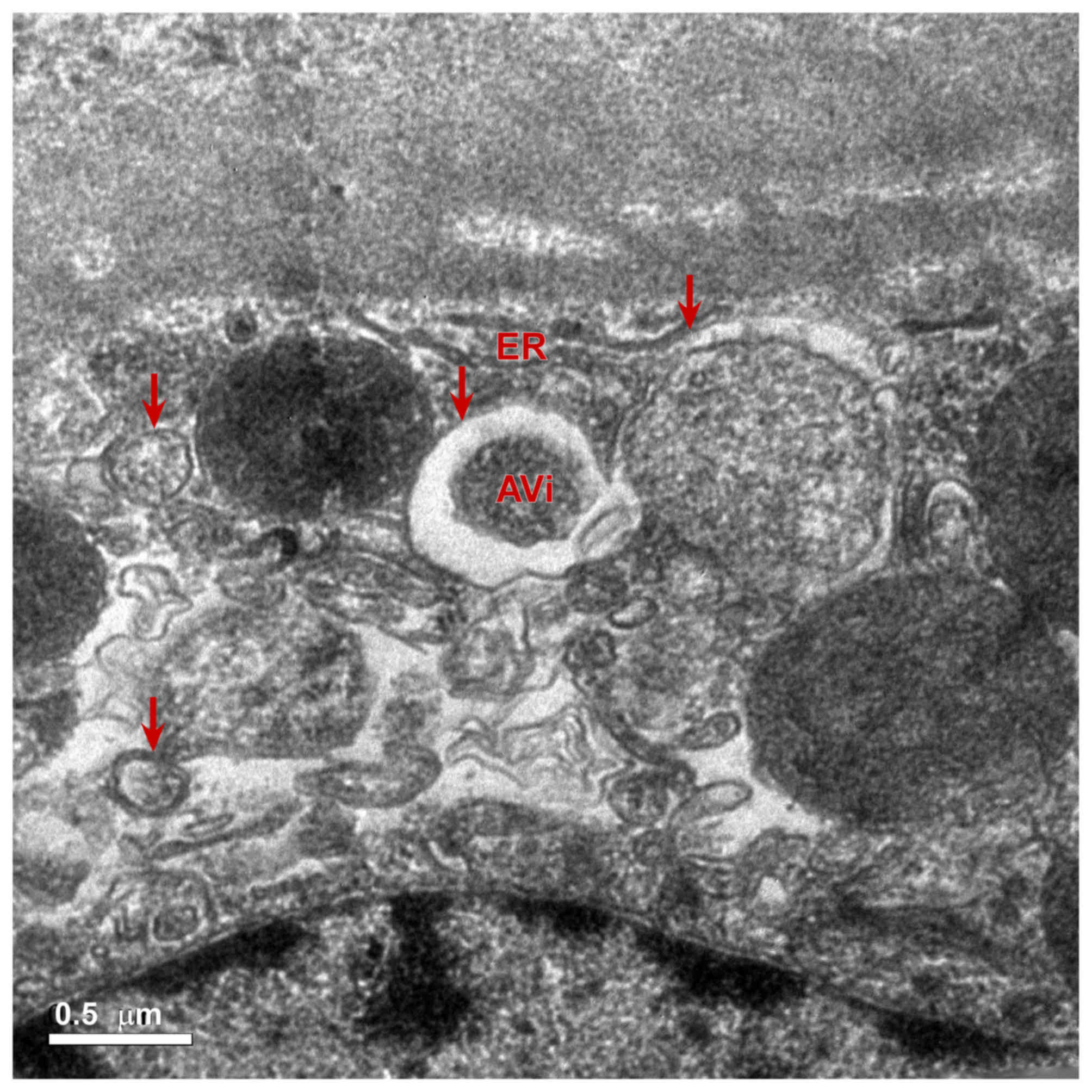|
1
|
Dhingra N and Bhagwat D: Benign prostatic
hyperplasia: An overview of existing treatment. Indian J Pharmacol.
43:6–12. 2011. View Article : Google Scholar : PubMed/NCBI
|
|
2
|
Lepor H: Pathophysiology, epidemiology and
natural history of benign prostatic hyperplasia. Rev Urol.
6:S3–S10. 2004.
|
|
3
|
Suzuki S, Platz EA, Kawachi I, Willett WC
and Giovannucci E: Intake of energy and macronutrients and the risk
of benign prostatic hyperplasia. Am J Clin Nutr. 75:689–697. 2002.
View Article : Google Scholar : PubMed/NCBI
|
|
4
|
Golda R, Wolski Z, Wyszomirska-Golda M,
Madaliński K and Michałkiewicz J: The presence and structure of
circulating immune complexes in patients with prostate tumors. Med
Sci Monit. 10:CR123–CR127. 2004.PubMed/NCBI
|
|
5
|
Vignozzi L, Rastrelli G, Corona G, Gacci
M, Forti G and Maggi M: Benign prostatic hyperplasia: A new
metabolic disease? J Endocrinol Invest. 27:1380–1384. 2014.
|
|
6
|
Turcu A, Smith JM, Auchus R and Rainey WE:
Adrenal androgens and androgen precursors: Definition, synthesis,
regulation and physiologic actions. Compr Physiol. 4:1369–1381.
2014. View Article : Google Scholar : PubMed/NCBI
|
|
7
|
Bhutia SK, Das SK, Azab B, Dash R, Su ZZ,
Lee SG, Dent P, Curiel DT, Sarkar D and Fisher PB: Autophagy
switches to apoptosis in prostate cancer cells infected with
melanoma differentiation associated gene-7/interleukin-24
(mda-7/il-24). Autophagy. 7:1076–1077. 2011. View Article : Google Scholar : PubMed/NCBI
|
|
8
|
Lian J, Wu X, He F, Karnak D, Tang W, Meng
Y, Xiang D, Ji M, Lawrence TS and Xu L: A natural bh3 mimetic
induces autophagy in apoptosis-resistant prostate cancervia
modulating bcl-2-beclin1 interaction at endoplasmic reticulum. Cell
Death Differ. 18:60–71. 2011. View Article : Google Scholar : PubMed/NCBI
|
|
9
|
Wang Y, Shao JC and Zhang SW:
Histomorphological studies on hyperplastic prostate of castrated
rat caused by androgen. Zhonghua Nan Ke Xue. 8:190–193. 2001.(In
Chinese).
|
|
10
|
Scolnik MD, Servadio C and Abramovici A:
Comparative study of experimentally induced benign and atypical
hyperplasia in the ventral prostate of different sat strains. J
Androl. 15:287–297. 1994.PubMed/NCBI
|
|
11
|
Wei XY, Zhang JK, Li J and Chen SB: Effect
of bilateral testicular resection on thymocyte and its
microenvironment in aged mice. Asian J Androl. 3:271–275.
2001.PubMed/NCBI
|
|
12
|
Livak KJ and Schmittgen TD: Analysis of
relative gene expression data using real-time quantitative PCR and
the 2(-Delta Delta C(T)) method. Methods. 25:402–408. 2001.
View Article : Google Scholar : PubMed/NCBI
|
|
13
|
Bizargity P and Schröppel B: Autophagy:
Basic principles and relevance to transplant immunity. Am J
Transplant. 14:1731–1739. 2014. View Article : Google Scholar : PubMed/NCBI
|
|
14
|
Todde V, Veenhuis M and van der Klei IJ:
Autophagy: Principles and significance in health and disease.
Biochim Biophys Acta. 1792:3–13. 2009. View Article : Google Scholar : PubMed/NCBI
|
|
15
|
Mizushima N: Autophagy: Process and
function. Genes Dev. 21:2861–2873. 2007. View Article : Google Scholar : PubMed/NCBI
|
|
16
|
Wrighton KH: Eating up damaged lysosomes.
Nat Rev Mol Cell Biol. 14:4652013. View
Article : Google Scholar
|
|
17
|
Münz C: The Autophagic machinery in viral
exocytosis. Front Microbiol. 8:2692017. View Article : Google Scholar : PubMed/NCBI
|
|
18
|
Moore A, Butcher MJ and Köhler TS:
Testosterone replacement therapy on the natural history of prostate
disease. Curr Urol Rep. 16:512015. View Article : Google Scholar : PubMed/NCBI
|
|
19
|
Singh M, Jha R, Melamed J, Shapiro E,
Hayward SW and Lee P: Stromal androgen receptor in prostate
development and cancer. Am J Pathol. 184:2598–2607. 2014.
View Article : Google Scholar : PubMed/NCBI
|
|
20
|
Zhou Y, Bolton EC and Jones JO: Androgens
and androgen receptor signaling in prostate tumorigenesis. J Mol
Endocrinol. 54:R15–R29. 2015. View Article : Google Scholar : PubMed/NCBI
|
|
21
|
Quiles MT, Arbós MA, Fraga A, de Torres
IM, Reventós J and Morote J: Antiproliferative and apoptotic
effects of the herbal agent pygeumafricanumon cultured prostate
stromal cells from patients with benign prostatic hyperplasia
(BPH). Prostate. 70:1044–1053. 2010. View Article : Google Scholar : PubMed/NCBI
|
|
22
|
Boya P and Kroemer G: Beclin 1: A BH3-only
protein that fails to induce apoptosis. Oncogene. 28:2125–2127.
2009. View Article : Google Scholar : PubMed/NCBI
|
|
23
|
Ciechomska IA, Goemans GC, Skepper JN and
Tolkovsky AM: Bcl-2 complexed with Beclin-1 maintains full
anti-apoptotic function. Oncogene. 28:2128–2141. 2009. View Article : Google Scholar : PubMed/NCBI
|
|
24
|
Nicholson TM and Ricke WA: Androgens and
estrogens in benign prostatic hyperplasia: Past, present and
future. Differentiation. 82:184–199. 2011. View Article : Google Scholar : PubMed/NCBI
|
|
25
|
Oudot A, Oger S, Behr-Roussel D, Caisey S,
Bernabé J, Alexandre L and Giuliano F: A new experimental rat model
of erectile dysfunction and lower urinary tract symptoms associated
with benign prostatic hyperplasia: The testosterone-supplemented
spontaneously hypertensive rat. BJU Int. 110:1352–1358. 2012.
View Article : Google Scholar : PubMed/NCBI
|
|
26
|
Liao RS, Ma S, Miao L, Li R, Yin Y and Raj
GV: Androgen receptor-mediated non-genomic regulation of prostate
cancer cell proliferation. Transl Androl Urol. 2:187–196.
2013.PubMed/NCBI
|
|
27
|
Floc'h N and Abate-Shen C: The promise of
dual targeting Akt/mTOR signaling in lethal prostate cancer.
Oncotarget. 3:1483–1484. 2012. View Article : Google Scholar : PubMed/NCBI
|
|
28
|
Kinkade CW, Castillo-Martin M, Puzio-Kuter
A, Yan J, Foster TH, Gao H, Sun Y, Ouyang X, Gerald WL,
Cordon-Cardo C and Abate-Shen C: Targeting AKT/mTOR and ERK MAPK
signaling inhibits hormone-refractory prostate cancer in a
preclinical mouse model. J Clin Investig. 118:3051–3064.
2008.PubMed/NCBI
|
|
29
|
Michel G and Baulieu EE: Androgen receptor
in rat skeletal muscle: Characterization and physiological
variations. Endocrinology. 107:2088–2098. 1980. View Article : Google Scholar : PubMed/NCBI
|
|
30
|
Fu R, Liu J, Fan J, Li R, Li D, Yin J and
Cui S: Novel evidence that testosterone promotes cell proliferation
and differentiation via G protein-coupled receptors in the rat L6
skeletal muscle myoblast cell line. J Cell Physiol. 227:98–107.
2012. View Article : Google Scholar : PubMed/NCBI
|
|
31
|
Basualto-Alarcón C, Jorquera G, Altamirano
F, Jaimovich E and Estrada M: Testosterone signals through mTOR and
androgen receptor to induce muscle hypertrophy. Med Sci Sports
Exerc. 45:1712–1720. 2013. View Article : Google Scholar : PubMed/NCBI
|
|
32
|
Lorenzo PI and Saatcioglu F: Inhibition of
apoptosis in prostate cancer cells by androgens is mediated through
downregulation of c-Jun N-terminal kinase activation. Neoplasia.
10:418–428. 2008. View Article : Google Scholar : PubMed/NCBI
|
|
33
|
Wang Z, Du T, Dong X, Li Z, Wu G and Zhang
R: Autophagy inhibition facilitates erlotinib cytotoxicity in lung
cancer cells through modulation of endoplasmic reticulum stress.
Int J Oncol. 48:2558–2566. 2016. View Article : Google Scholar : PubMed/NCBI
|
|
34
|
Ziparo E, Petrungaro S, Marini ES, Starace
D, Conti S, Facchiano A, Filippini A and Giampietri C: Autophagy in
prostate cancer and androgen suppression therapy. Internat J Mol
Sci. 14:12090–12106. 2013. View Article : Google Scholar
|
|
35
|
Heras-Sandoval D, Pérez-Rojas JM,
Hernández-Damián J and Pedraza-Chaverri J: The role of
PI3K/AKT/mTOR pathway in the modulation of autophagy and the
clearance of protein aggregates in neurodegeneration. Cell Signal.
26:2694–2701. 2014. View Article : Google Scholar : PubMed/NCBI
|
|
36
|
Klionsky DJ, Abdelmohsen K, Abe A, Abedin
MJ, Abeliovich H, Acevedo Arozena A, Adachi H, Adams CM, Adams PD,
Adeli K, et al: Guidelines for the use and interpretation of assays
for monitoring autophagy (3rd edition). Autophagy. 12:1–222. 2016.
View Article : Google Scholar : PubMed/NCBI
|
|
37
|
Huang CC, Lee CC, Lin HH, Chen MC, Lin CC
and Chang JY: Autophagy-regulated ROS from xanthine oxidase acts as
an early effector for triggering late mitochondria-dependent
apoptosis in cathepsin S-targeted tumor cells. PLoS One.
10:e01280452015. View Article : Google Scholar : PubMed/NCBI
|















